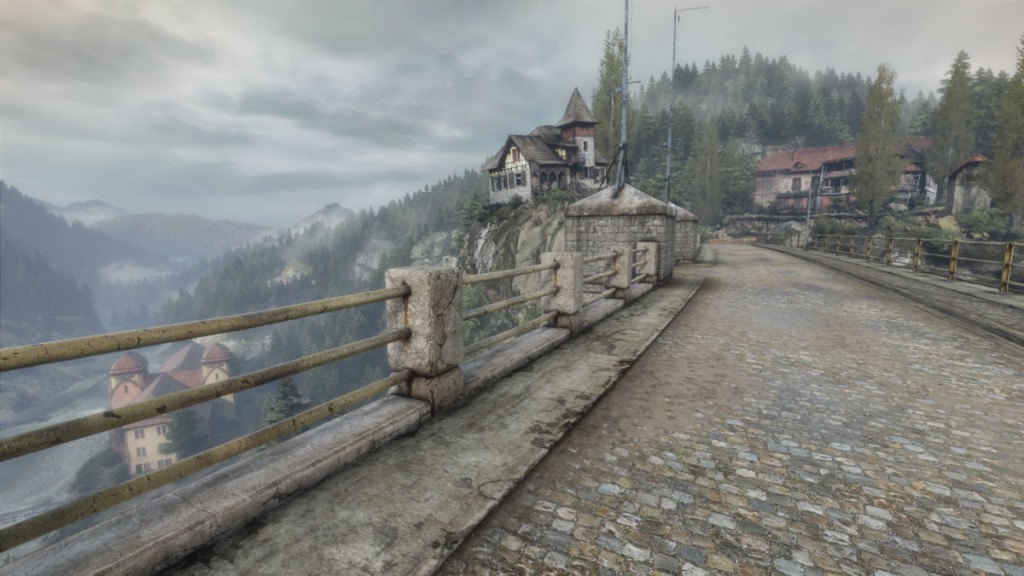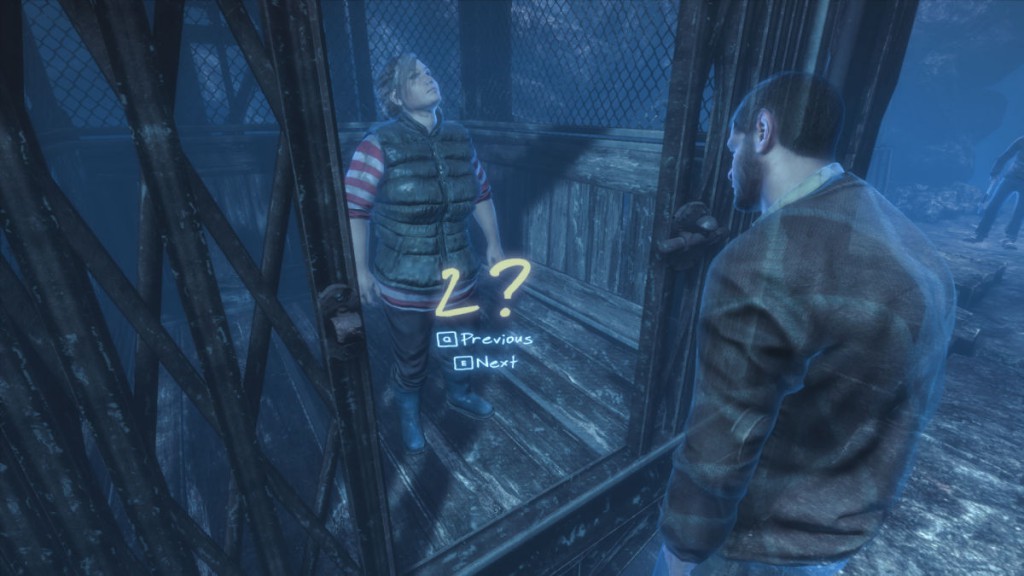Developer: The Astronauts | Released: 2014 | Genre: Adventure, First Person
This sure was a pretty game. I ran it with everything set to high on my new monster PC and still it ran fluently. Lots of details, high resolution textures, wind in the leafs, although some stuff in the distance far away seemed to be affected by an LOD algorithm in a somewhat aggressive manner. I also had a little bit of mouse lag when turning the view. Still, I quickly acknowledged that this kind of modern adventure game was much more up my sleeve than the previous point-and-click adventure game with its 2D retro graphics and pixelated characters. I’ve been spoiled by modern technology, as was probably inevitable.
The game starts with no difficulty selector and no direct save option other than its own autosaves. And boy, is the autosaving indeed rare. Often I had to go through a lot of exploration and solve a multi-step puzzle before I saw it saving my progress. I sure understand the gamers that are miffed about this. However, you can’t die or be caught up in a way that can’t be escaped, so if your system is stable and you can play relatively uninterrupted, there’s nothing to be afraid of. Except perhaps the open and unrestricted nature of the gameplay. It’s possible to completely bypass a puzzle section and later have to backtrack a long way to solve it, as it turns out that it was actually mandatory to complete the game. This could have been improved with some clever gating. For example, there’s a stone bridge across a dam that could have had an iron gate or something. Solve the local puzzle and the iron gate is suddenly opened up for you. This have worked well in other games with puzzles, so why not here?
There’s a general multi-step puzzle that occurs repeatedly in various areas of the adventure world. Typically you have to find a body of someone recently murdered, obtain or move a pair of items, touch the body to enter a blue tinted mode, visit half a dozen hotspots to show frozen cutscenes of ghostly figures, then use previous/next keys on each of these hotspots to guess at the proper chronological order of the cutscenes. Get it wrong and one of the cut scenes immediately dissolves. You then tweak the order at bit and try again. The interface for this is easy to use and logical, and I thought it was a nice idea. I’m not sure I have seen anything quite like this before.
There is no inventory to open and glance at. An item is just picked up, can be rotated, and then acquired if you need it elsewhere. Completely contextual. Examining hotspots shows floating text strings; the thoughts of the detective you’re controlling. A hotspot that requires some sort of action (like you bringing an item there later) will show an eager cloud of repeated word swaying around like angry bees. Sometimes you can even mouse-move to another spot and the cloud concentrates to show that you’ve found the right direction, after which you can activate a vision. Successfully completed puzzles, including items placed in the right spot, invokes a swooshing sound effect. There are other, more complicated local puzzles, which I’ll mention in greater detail in the minutia section below.
Areas are easy to traverse because of an FPS-style sprint option that can last forever. No stamina to worry about here. However, there are invisible walls to keep you from falling down and die, and they can sometimes be too excessive, emphasizing the linear nature of the game. In fact, sometimes the game felt like it was trying to avoid challenging me at all. I’m all for easier games and generally think developers are often sadists, but this game offered idle walks that felt unbalanced. There was a particular walk from a dam to a church that took forever. It was only complimented by a few narrative words by your detective, and it made it feel a lot like a walking simulator. And when I finally found something interesting halfway there, I couldn’t even interact with it. I just had to press on. (Later I came back using a different, shorter route that seemed to be the one I was actually supposed to have taken first.)
Music was calm and symphonic, and of a high quality just like pretty much everything else, like voice-overs, human models, and driving of train vehicles. I did yearn for a few critters or wild animals in the landscape while walking around. I only heard a few chirping bird sounds (thankfully the overused dialing telephone bird was not among them). The only animated models I saw was the Carter family in past cutscenes. You can’t see yourself when you look down, same as in e.g. Half-Life.
Minutia
Here I’m going into details with sometimes biased observations. This may be spoiler ridden. Whether you want to complete the game first or don’t give a hoot is up to you.
Last warning. There will be spoilers here.
- The long road from the dam up to the church changed into a sinister road with big stones that I’m happy I didn’t have to drive on with a car. It would have rearranged everything lose on my dashboard. At first I actually thought it was a dried-up river.
- Some time before the release I saw a video of the first multi-step puzzle narrated by a developer. The one with a body cut in half by a train. I was surprised how little I remembered in that video. I actually got stuck for a while and almost left it behind until I found the stone.
- There was a most unexpected sequence chasing an astronaut, with me ending up in a capsule in space. The ride itself looked like it was inspired by the movie Contact. In space, I thought for a moment that it was a one-way trip and some sort of an Easter Egg that I fell upon by chance. But as soon as a letter was read, the scene changed to something much more grounded, and this turned out to be a recurring theme matching the imagination of the child, Ethan Carter.
- The first two houses past the dam offered a unique room swapping puzzle. I was lucky enough to visit the right house first and learn the proper locations of the rooms there. It served as a memory test in the second house, where the room contents could be swapped in each doorway. I imagine this made use of a portal technology that is part of the Unreal Engine.
- There was a mine with a lot of small and dark dead ends to cover up how linear it actually was. An exception was a side entrance that spiraled down to a small maze where five ghosts had to be found to reveal the codes for a circular puzzle door. The door puzzle itself was fairly straightforward.
- A sixth ghost was wandering around scaring the shit out of me, and it was immediately clear how similar the mechanics of this ghost was to Amnesia: The Dark Descent. If I saw him coming I could often run away, or pass him if he had his back turned to me. If he spotted me, he teleported up right in front of me and screamed for a bit, followed by me respawning at the entrance to the maze. I actually thought I had to kill this ghost for a while to get the sixth code, but it turned out that it wasn’t necessary (and you probably can’t either).
- In the beginning I even thought the five ghosts in the maze were killed to match the multi-step corpse puzzles I solved along the way, which I thought made sense. I even left the maze several times to solve more multi-step puzzles and then returned, only to be disappointed that the sixth ghost was still walking around.
- Nice touch with the small mine vehicle smashing through a pile of rocks. I immediately tried this, even though my video gaming experience constantly told me that the vehicle would probably just bump against the rocks and that I would have to remove them some other way.
- I was actually a little bit stuck for a while because I couldn’t immediately see what good came of turning the dam turbine off. Only after a few long strolls (including using the cliff elevator a few times) did it occur to me that I could now pass the river on a stone fence. The fence was still partly flooded, which was what threw me off.
- The burned down house ruins revealed a cellar with a wall drawing by the kid, Ethan Carter, where I could fast travel to still unsolved puzzles. It was a very nice way of showing what was still missing and immediately get to work on it. I was quickly longing for a fast travel ability back as well, however. Having to run back to the ruins was strenuous because of placing it at the end of the world. (But fast travel back, how? Good question. Maybe a special HUD icon that appears?)
- Very sensible that they had a cutscene mention that the acidic bubble bath in the mines wasn’t hot, just a chemical reaction, and that it was safe to cross. I would also bet almost anything that the reason it was there to slow the player down was to allow for all the level data to be loaded before exiting the mine.
- After all mandatory puzzles were solved, a cutscene was played showing the house burning down and the Carter family escaping. As I passed through the doorways, their models were frozen in time. It was nice effect that I have also seen encompassing an entire level in an FPS that shall not be mentioned here, as that would be a spoiler for another game.
This was a short and easy first person adventure game with very pretty Unreal Engine graphics that was built using an impressive photogrammetry technique. It was mostly linear and did have invisible walls, and the story was not all that engaging. However, the puzzles, the acting, and the human models were of a very professional caliber, and the graphics alone was certainly worth the price of admission all by itself.
| TitleLength | Dates | Diff / Cht | Save | Score | |
|---|---|---|---|---|---|
|
The Vanishing of Ethan Carter
2014 The Astronauts4h 46m 2
|
2015-08-10 2015-08-15 |
8
|




